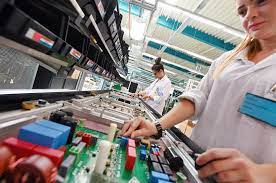PCB fabrication is the vital process that brings these pcb assembly intricate and essential components to life. PCBs are not just pieces of plastic with shiny traces; they are intricate layers of conductive material, insulating substrate, and components, meticulously designed and manufactured to ensure our gadgets function seamlessly.
The PCB fabrication process begins with the design phase, where engineers carefully plan the layout of the board, considering the placement of components and the traces that will connect them. Once the design is finalized, it’s time to choose the appropriate substrate material. FR-4, a type of fiberglass-reinforced epoxy, is commonly used for its reliability and cost-effectiveness. More advanced applications may require specialized materials like polyimide or ceramic.
With the substrate in hand, the next step is to apply a layer of copper foil to both sides of the board. This foil will serve as the conductive pathways for electrical signals. To create the desired circuit pattern, a photoresist layer is applied on top of the copper and exposed to ultraviolet light through a mask. The mask ensures that the photoresist hardens only in the desired areas, leaving the rest of the copper untouched.
After a chemical etching process that removes the unwanted copper, the hardened photoresist is stripped away, leaving the clean, etched copper traces behind. The PCB is now ready for the placement of components. Modern PCBs can accommodate a wide range of components, from tiny surface-mount devices to larger through-hole components, all soldered onto the board using specialized equipment. The soldering process ensures electrical connections are reliable and durable.
Quality control is a crucial part of PCB fabrication, as any defects or flaws can lead to malfunctions or failure of the final product. Automated optical inspection (AOI) and other testing methods are employed to detect any issues in the circuitry, such as short circuits or missing components.
